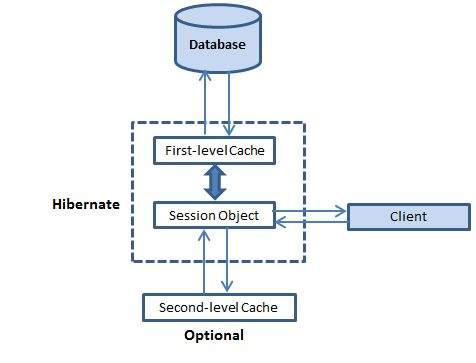Caching is all about application performance optimization and it sits between your application and the database to avoid the number of database hits as many as possible to give a better performance for performance critical applications.
Caching is important to Hibernate as well which utilizes a multilevel caching schemes as explained below:
First-level cache:
The first-level cache is the Session cache and is a mandatory cache through which all requests must pass. The Session object keeps an object under its own power before committing it to the database.
If you issue multiple updates to an object, Hibernate tries to delay doing the update as long as possible to reduce the number of update SQL statements issued. If you close the session, all the objects being cached are lost and either persisted or updated in the database.
Second-level cache:
Second level cache is an optional cache and first-level cache will always be consulted before any attempt is made to locate an object in the second-level cache. The second-level cache can be configured on a per-class and per-collection basis and mainly responsible for caching objects across sessions.
Any third-party cache can be used with Hibernate. Anorg.hibernate.cache.CacheProvider interface is provided, which must be implemented to provide Hibernate with a handle to the cache implementation.
Query-level cache:
Hibernate also implements a cache for query resultsets that integrates closely with the second-level cache.
This is an optional feature and requires two additional physical cache regions that hold the cached query results and the timestamps when a table was last updated. This is only useful for queries that are run frequently with the same parameters.
The Second Level Cache:
Hibernate uses first-level cache by default and you have nothing to do to use first-level cache. Let's go straight to the optional second-level cache. Not all classes benefit from caching, so it's important to be able to disable the second-level cache
The Hibernate second-level cache is set up in two steps. First, you have to decide which concurrency strategy to use. After that, you configure cache expiration and physical cache attributes using the cache provider.


















